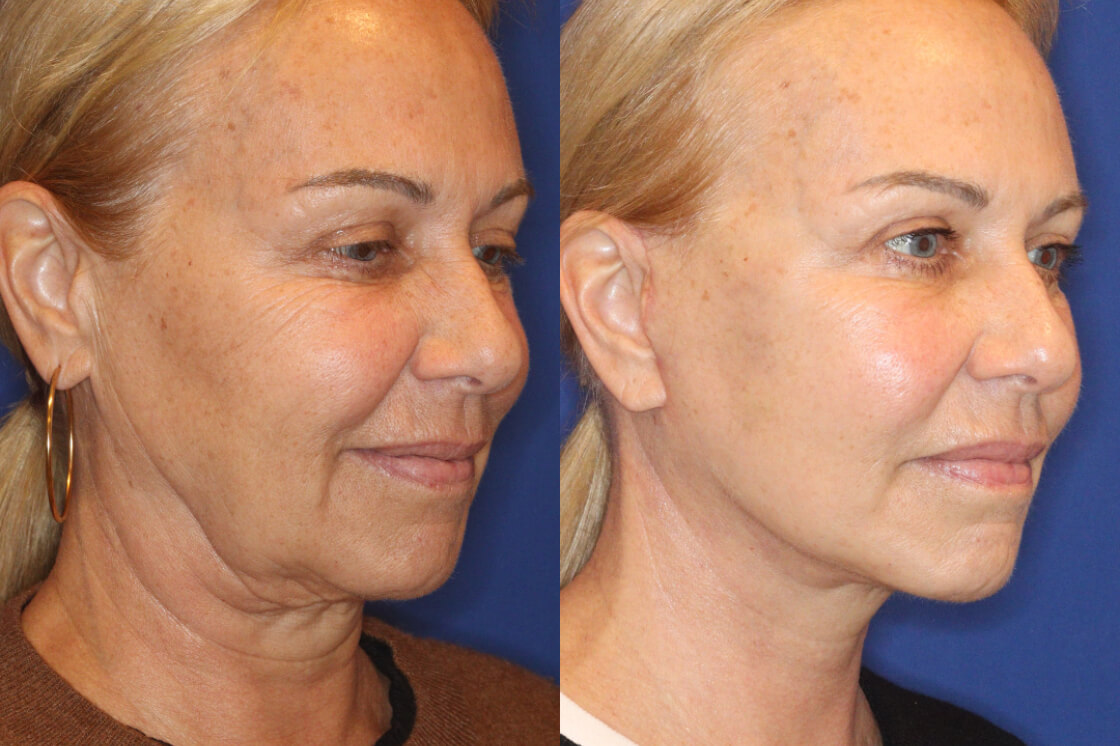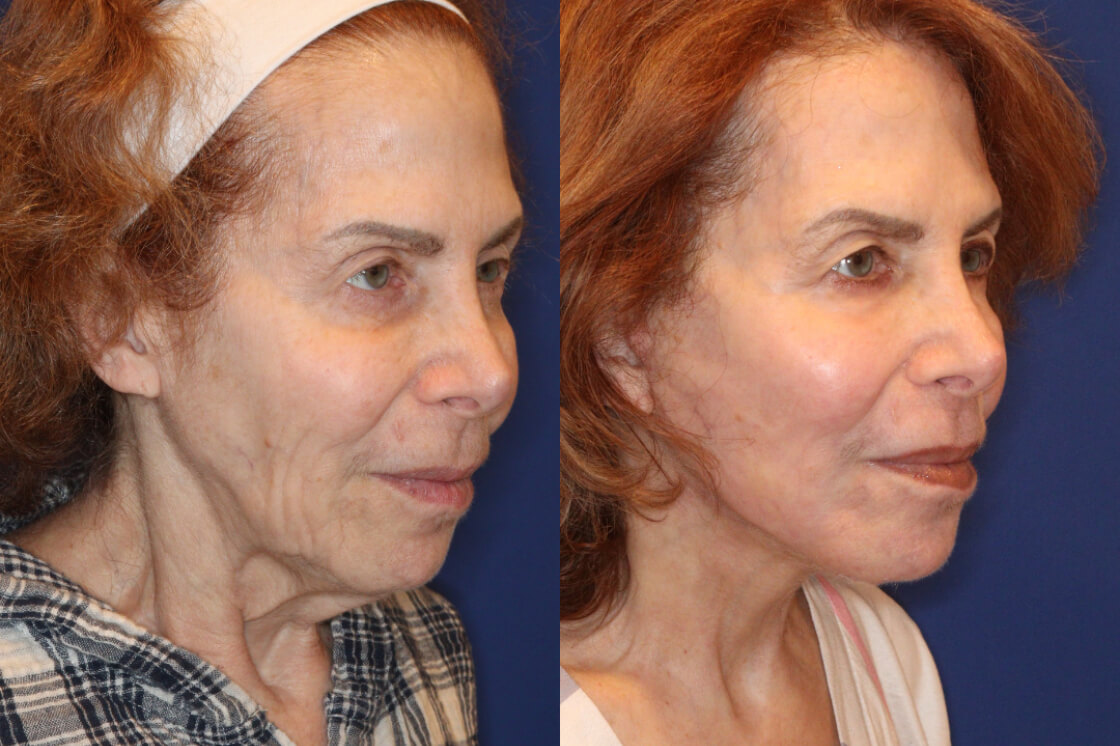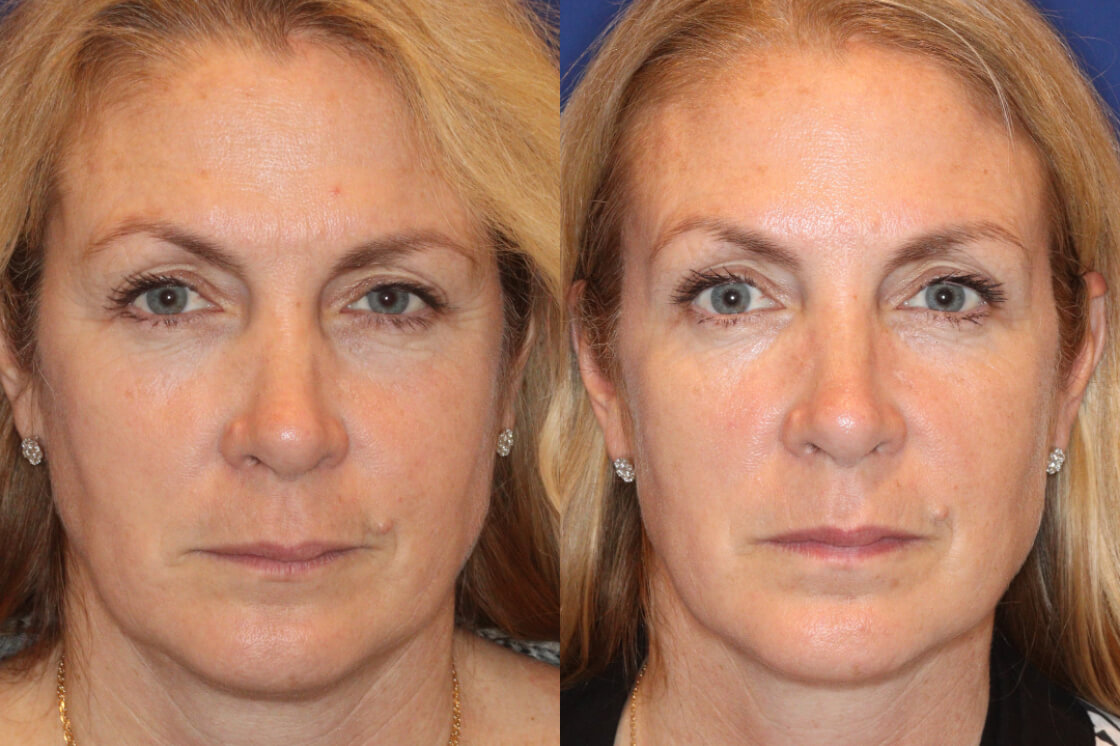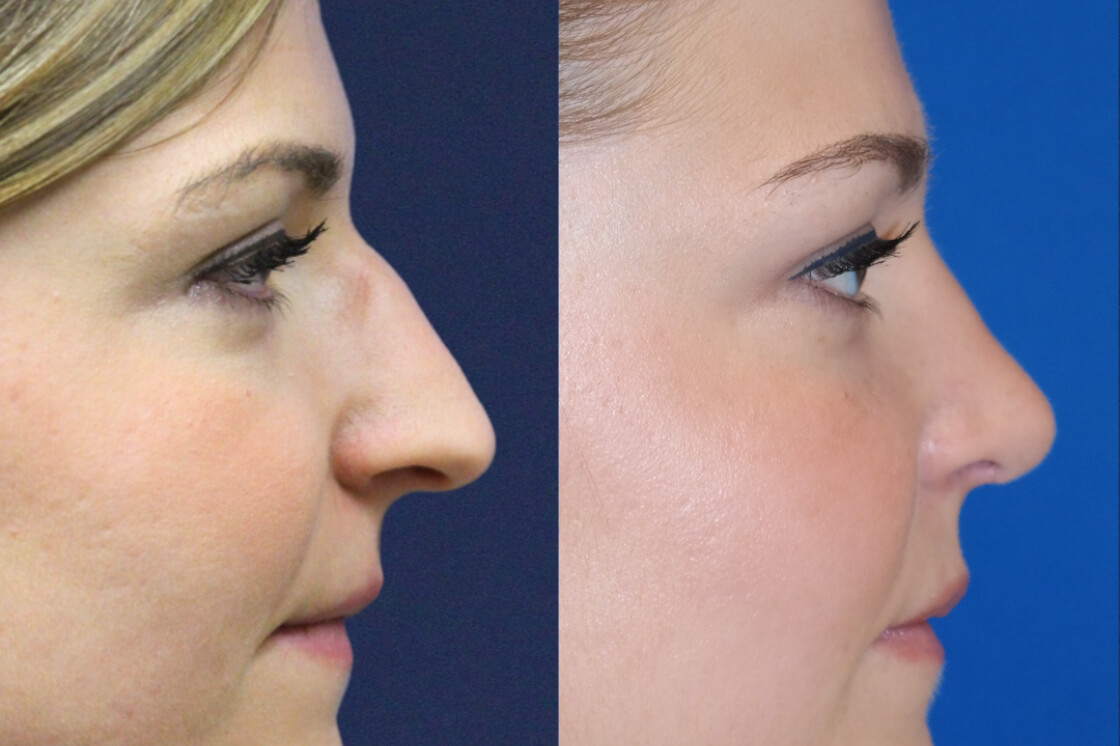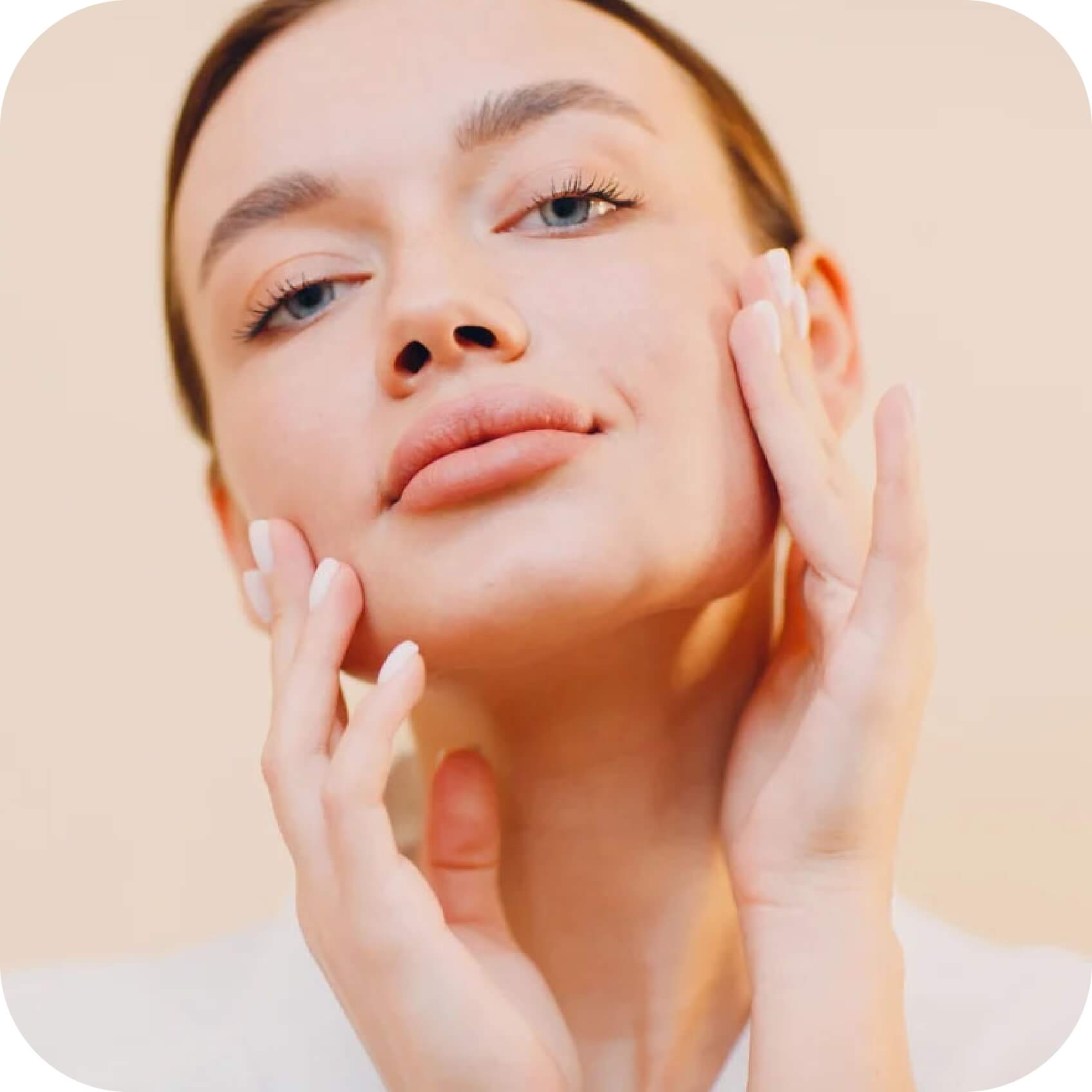Revision Rhinoplasty
Conveniently located to serve the areas of New York, NY
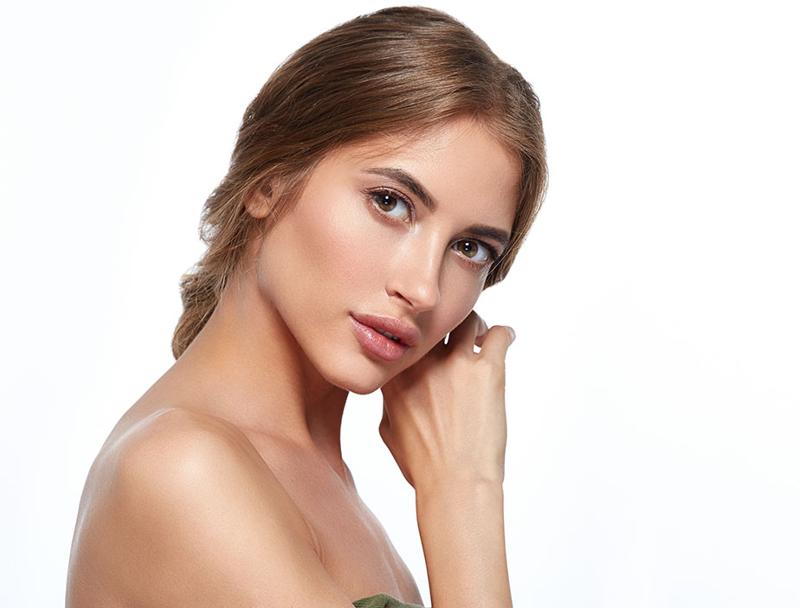
Revision rhinoplasty is a specialized procedure designed to correct or enhance the results of a previous nose surgery. After a nose surgery, functional or aesthetic complications can arise and leave the patient dissatisfied with the look and feel of their nose. Revision rhinoplasty procedures can be particularly challenging due to the presence of scarring from previous procedures and the way the anatomy changes after an initial rhinoplasty, thus requiring an expert facial plastic surgeon who specializes in revision rhinoplasty. (1)
Dr. Jennifer Levine is a double board-certified facial plastic surgeon with 25+ years of experience based in New York City. She is renowned for her expertise in this complex, intricate procedure. Her private surgical center on the Upper East Side is equipped with state-of-the-art technology, providing a comfortable and safe environment for patients. Dr. Levine’s comprehensive approach includes a thorough consultation to understand the patient’s goals, detailed surgical planning, and post-operative care to ensure the best possible outcome. Combining meticulous precision with a personalized approach, Dr. Levine ensures natural, balanced results that restore both function and appearance. To meet with Dr. Levine to discuss what a revision rhinoplasty is capable of, call Jennifer Levine MD at (212) 517-9400 or fill out our contact form.
Contents
- 1 Before and After Photos
- 2 About Revision Rhinoplasty
- 3 Benefits of Revision Rhinoplasty
- 4 Candidates
- 5 Personal Consultation
- 6 Preparation
- 7 Procedure
- 8 Recovery
- 9 Results
- 10 Corresponding Procedures
- 11 Cost of Revision Rhinoplasty in NYC
- 12 FAQ
- 12.1 What is the difference between primary and revision rhinoplasty?
- 12.2 What are common reasons people seek revision rhinoplasty?
- 12.3 How long should I wait before considering revision rhinoplasty?
- 12.4 Is revision rhinoplasty more complicated than primary rhinoplasty?
- 12.5 Can fillers correct my nose after rhinoplasty?
- 13 References
Before and After Photos
About Revision Rhinoplasty
Revision rhinoplasties are complex, meticulous procedures, but they are not all that uncommon; around 15% of people who have undergone a rhinoplasty will seek out a revision rhinoplasty. (1) These patients may be generally disappointed with how their initial rhinoplasty turned out, or they may have developed changes in their nose over time. (1)
Some of the issues that a revision rhinoplasty can help address include:
- Over-skeletonized Noses: Excessive removal of cartilage and bone can lead to a collapsed appearance.
- Crooked Noses: Misalignment from previous surgeries can cause functional and aesthetic issues.
- Asymmetry: Disproportionate features can disrupt facial harmony.
- Breathing Issues: Problems like a deviated septum or middle-vault collapse can affect nasal airflow.
Non-Surgical Revision
In some cases, Dr. Levine can make minor adjustments to refine the results of a rhinoplasty. Dermal fillers can smooth out bumps, refine the nose shape, and improve symmetry during a 15-30 minute procedure. It is a minimally invasive treatment with immediate results and essentially no downtime; patients can return to their normal activities immediately. However, dermal fillers eventually dissolve, meaning results are temporary and last for about 6-12 months. Non-surgical nose jobs are a popular choice for those seeking subtle improvements or who do not yet feel ready for a revision rhinoplasty. Dr. Levine can also make adjustments to non-surgical revisions as needed.
Benefits of Revision Rhinoplasty
Patients can enjoy the following benefits as a result of a revision rhinoplasty:
- Enhanced Appearance: A revision rhinoplasty can help a patient achieve a balanced and natural look by correcting previous surgical errors or addressing dissatisfaction.
- Improved Breathing: If a previous rhinoplasty has caused structural issues that impede airflow or overall nasal function, Dr. Levine can resolve these issues with a revision rhinoplasty.
- Boosted Confidence: When a patient is pleased with the results of their revision rhinoplasty, they can experience improvements in their self-esteem. The aesthetic refinements, as well as the nose’s elevated functionality, are factors that can improve a patient’s overall quality of life.
Candidates
Ideal candidates for revision rhinoplasty are individuals who have had at least one previous rhinoplasty and are experiencing issues such as:
- Nasal obstruction
- Cosmetic imperfections
- Structural irregularities
Candidates should also be in good overall health and have realistic expectations about the results of revision rhinoplasty. Dr. Levine will evaluate patients for their potential candidacy during a personal consultation.
Personal Consultation
The revision rhinoplasty process begins with an in-depth consultation with Dr. Levine in the Upper East Side of New York City. During this important meeting, she thoroughly assesses the patient’s nasal structure, discusses their concerns and goals, and reviews their medical history. Dr. Levine takes the time to understand the specific issues that arose from the previous surgery and clearly explains all potential solutions and outcomes. Taking a comprehensive approach, Dr. Levine will consider both the functional and the aesthetic concerns of the patient. This detailed evaluation will help Dr. Levine create a customized surgical plan that is tailored to the patient’s unique needs.
If you are considering a revision rhinoplasty, schedule a consultation with Dr. Levine to get closer to achieving the nose you have always wanted. Call (212) 517-9400 or request a consultation through our online form.
Preparation
It is important that you follow all preparation instructions that Dr. Levine provides before your surgery. These steps can help ensure an optimized procedure and recovery process:
- Wait until all previous procedures you have undergone have completely healed
- Stop smoking several weeks before the procedure date
- Avoid medications or substances with blood-thinning properties
- Arrange for time off of work
Procedure
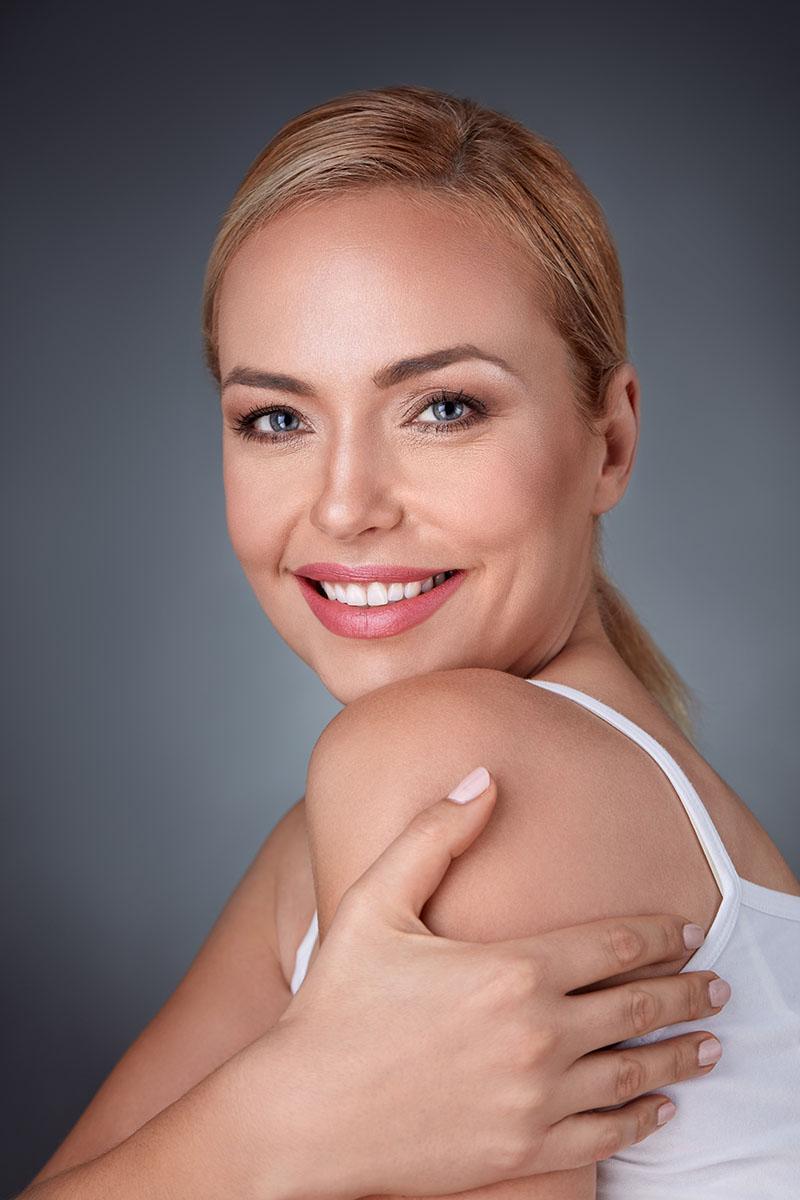
Dr. Levine performs revision rhinoplasties in our state-of-the-art surgical facility, equipped with the latest technology. Dr. Levine may choose to use either an open or closed rhinoplasty approach, depending on the complexity of the case and the specific corrections that she will need to make. Open rhinoplasty involves an incision at the base of the nose, while closed rhinoplasty does not require external incisions. The procedure will aim to correct structural issues, refine the nasal shape, and improve both function and aesthetics. Dr. Levine’s carefully planned techniques ensure minimal scarring and natural-looking results.
Types of Revision Rhinoplasty
Some of the various different rhinoplasty revision procedures include:
- Refinement Revision: This is the least complex type of revision rhinoplasty. During this procedure, Dr. Levine can address minor imperfections of the nose or hide bothersome scar tissue. Dr. Levine can use either the closed or open techniques for these procedures, as there is no need to insert any reconstructive cartilage to build up the nose. (1)
- Complete Revision: Dr. Levine will use a complete revision approach when the results of the initial rhinoplasty did not provide a comprehensive resolution to the imperfections of the nose. Dr. Levine can use this approach to provide the patients with the results they were looking for in the first place. During this procedure, Dr. Levine can refine or sculpt any problem areas as needed. (1)
- Structural Revision: When the patient’s previous rhinoplasty is more unsatisfactory, Dr. Levine will do a structural revision of the nose. Patients in need of this type of revision may be experiencing functional issues in addition to cosmetic dissatisfaction. Oftentimes, Dr. Levine will have to use new grafts made out of cartilage or tissue in order to build up and provide support to the nose. Dr. Levine will most likely utilize the open approach for this procedure. (1)
- Major Revision: Patients who require a major revision may experience more detrimental results from their first rhinoplasty. These situations can become even more complex if the patients have already had previous unsuccessful rhinoplasty revisions. Deformities and imperfections in these cases may be impacting all areas of the nose, resulting in a nose that is functionally inadequate and cosmetically unsatisfactory. Dr. Levine may need to use even more cartilage or tissue grafts to help rebuild the nose, while consistently using an open approach. (1)
Recovery
Recovery from a revision rhinoplasty varies depending on the extent of the surgery. Initially, patients may experience swelling and bruising, which will gradually subside over a few weeks. If necessary, we may prescribe pain medications and antibiotics. (1) Dr. Levine’s patient care team provides detailed post-operative care instructions that promote healing and help patients achieve the best possible results. Most patients can return to their normal activities within two weeks, although full recovery and the final results will take several months. Furthermore, patients should avoid more intense exercises and heavy lifting for about 3 weeks after the procedure. We help patients schedule all of the necessary follow-up appointments to monitor the healing process and ensure patient satisfaction. (1)
Results
A revision rhinoplasty can result in a nose that is both aesthetically pleasing and functionally sound. Dr. Levine can solve many, if not all, of the problems that can arise after an inadequate primary rhinoplasty or insufficient previous revisions. Patients who receive effective rhinoplasty revisions can see an improvement in their overall quality of life, as they may feel more confident in their appearance and more satisfied with their nose’s improved functionality. (2)
Corresponding Procedures
Corresponding procedures can enhance the results of a revision rhinoplasty by addressing other facial concerns. With these procedures, patients may achieve a more harmonious facial balance. However, Dr. Levine may recommend waiting until after the revision rhinoplasty fully heals before addressing other areas of the face. Some popular corresponding procedures include:
Chin Augmentation
A chin augmentation can enhance the size and shape of the chin while providing more balance to the other features of the face. The chin is important to a patient’s profile; a recessed or weak chin can draw attention to the nose, or distract from other facial features. Dr. Levine can use a surgical approach with a chin implant, or administer dermal fillers to create the appearance of a stronger chin.
Eyelid Lift
During an eyelid lift, or a blepharoplasty, Dr. Levine will remove excess skin and fat from the eyelids. This will refresh the appearance of the eyes, making patients look less tired and years younger. An eyelid surgery can complement the overall facial rejuvenation that a revision rhinoplasty will provide.
Cost of Revision Rhinoplasty in NYC
Because of the different approaches Dr. Levine can take to revision rhinoplasty, the overall cost of the procedure can vary. We will factor the extent of the revision–and the complexity of the corrections Dr. Levine will need to make–into the cost as well. In order to better understand what the cost may be for your revision rhinoplasty, call our Upper East Side office at (212) 517-9400 or fill out our contact form so we can help you set up an appointment today.
FAQ
What is the difference between primary and revision rhinoplasty?
Primary rhinoplasty refers to the first surgical attempt to modify the nose, while revision rhinoplasty focuses on refining or correcting issues from prior procedures.
What are common reasons people seek revision rhinoplasty?
Common reasons include unresolved aesthetic concerns, breathing difficulties, scar tissue formation, or the need for additional corrections post-surgery.
How long should I wait before considering revision rhinoplasty?
Generally, it is advisable to wait a minimum of one year after the original surgery to allow complete healing. This timeline gives your body time to adjust and establish a baseline for evaluation.
Is revision rhinoplasty more complicated than primary rhinoplasty?
Yes, revision rhinoplasty tends to present unique challenges due to altered anatomy and existing scar tissue. Selecting an experienced surgeon is crucial to a successful outcome.
Can fillers correct my nose after rhinoplasty?
Yes, fillers primarily serve to enhance specific aspects of the nose, however, they are not permanent. If more significant changes are required, surgical revisions may be necessary.
References
- Jiang A, Chamata ES, Bressler FJ. Revision Rhinoplasty: With Introduction of a Novel Preoperative Assessment Classification System. Seminars in Plastic Surgery. 2021;35(02):078-087. doi:https://doi.org/10.1055/s-0041-1727271
- Riedel F, Matthias Wähmann, Veit JA, Olcay Cem Bulut. Quality of life outcome in revision rhinoplasty in regards to number of revision surgeries and cartilage donor site. Auris Nasus Larynx. 2022;49(2):286-290. doi:https://doi.org/10.1016/j.anl.2021.08.004
